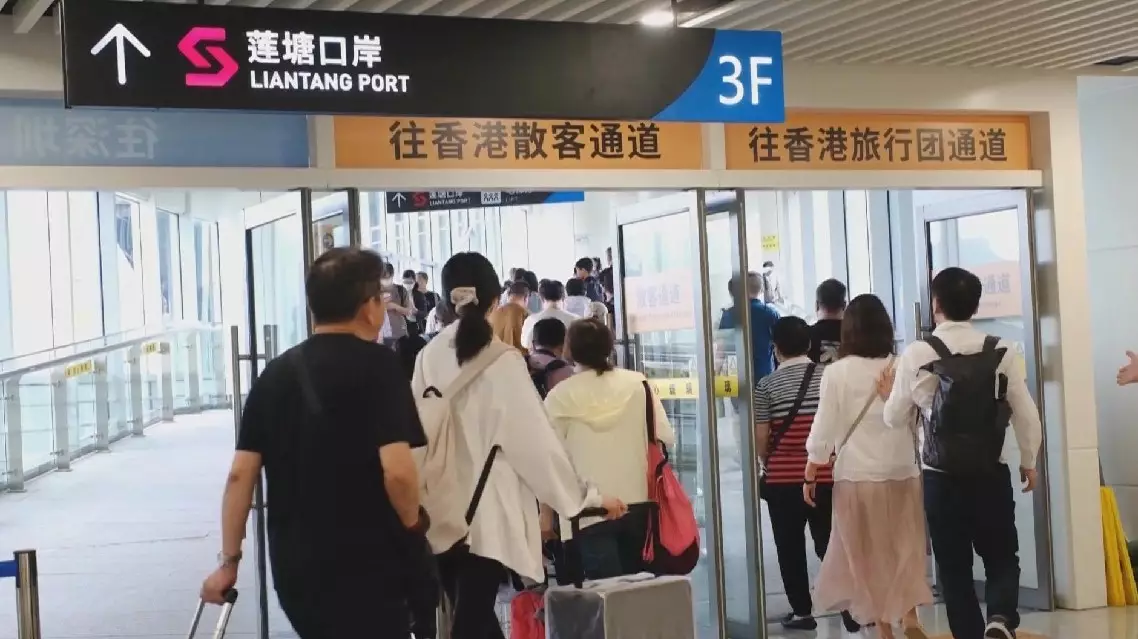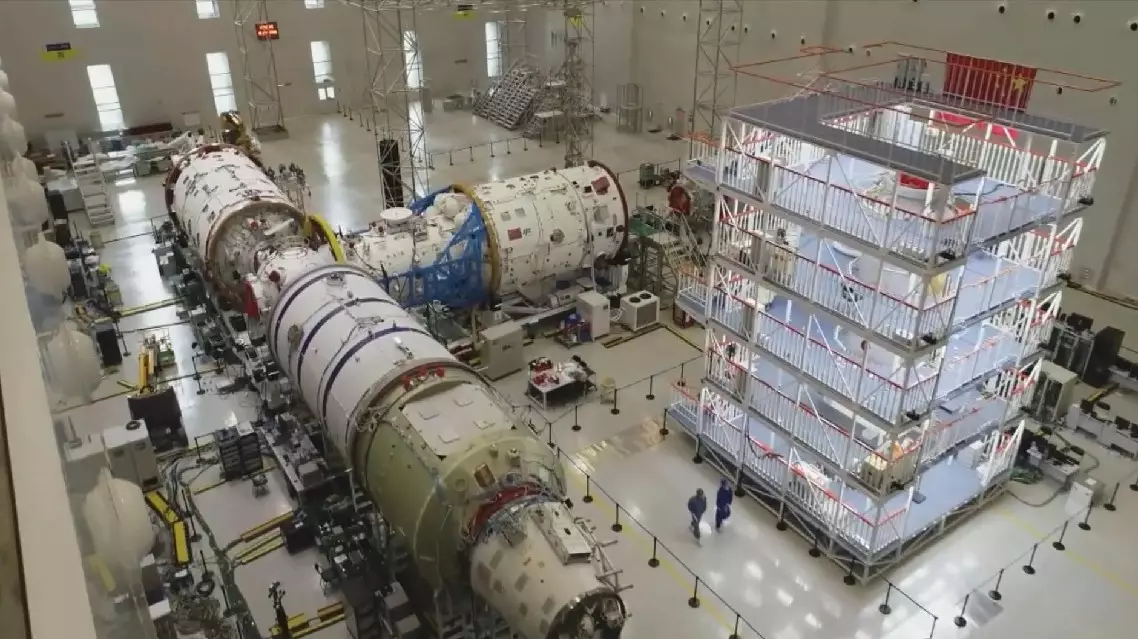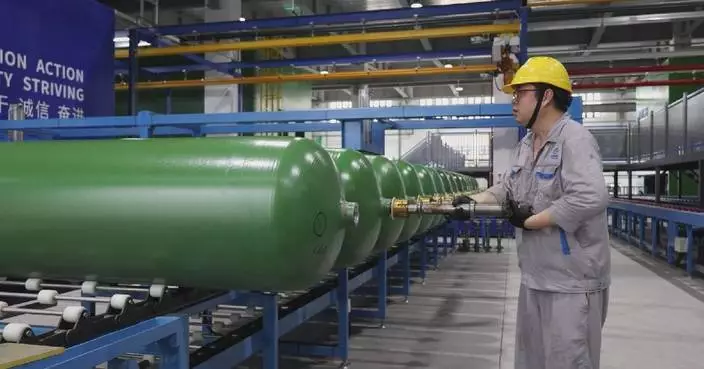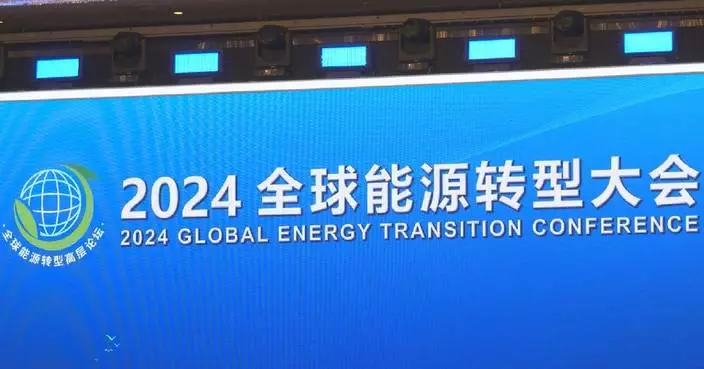The Liantang Port in south China's Shenzhen recorded a total of over 10 million cross-border travels this year as of Saturday, five months ahead of the time when the 10 million-mark was made last year.
Fully operational in February 2023, Liantang is the newest land port between Shenzhen and Hong Kong and the only one that allows bicycle traffic.
Originally designed for 30,000 daily crossings, the port now handles an average of 65,000 daily passengers and peaked at 100,000 in mid-May, 3.3 times its designed capacity.
Travelers at the port shared their positive experiences.
"I find it quite smooth," said a female passenger carrying a baby.
"It's quite new, and the service here is ideal," commented a male passenger.
"It's very fast and convenient to clear the customs. It's great," another male passenger said.
Liantang Port's convenient transportation and efficient customs clearance have enhanced the one-hour living circle effect in the Guangdong-Hong Kong-Macao Greater Bay Area and facilitated its integrated development.
So far this year, Hong Kong residents made 7.73 million crossings at Liantang, accounting for 77 percent of the total and marking a 273 percent increase from last year.
"We have introduced four new measures this year, including checking with handheld mobile devices, to maximize inspection efficiency with more sci-tech applications," said Xu Weibin, deputy director of the border inspection office at the Liantang Border Inspection Station.

Shenzhen port bordering Hong Kong records 10 mln plus cross-border travels

Shenzhen port bordering Hong Kong records 10 mln plus cross-border travels
North China's municipality of Tianjin plays a pivotal role in China's aerospace development, thanks to its extensive capabilities in manufacturing, assembly, testing and, more importantly, talent.
The port city is integral to the assembly of major components for the country's orbiting Tiangong space station, including the Tianhe core module and the Wentian and Mengtian laboratory modules.
The Tianhe core serves as the module management and control center, the main living space of the crew and supports some scientific and technological experiments.
The Wentian module is primarily used for scientific and technological experiments, as well as providing working and living space, and shelter in emergencies. And the Mengtian module, similar to the Wentian module in functions, is equipped with a special airlock chamber to support the entry and exit of cargo and instruments with the help of astronauts and mechanical arms.
Tianjin, equipped with state-of-the-art facilities, ensures precision engineering through advanced technologies such as augmented reality (AR) glasses, which assist in the accurate installation of cables and components.
Tianjin’s contributions to the aerospace industry extend beyond the assembly of space station modules to the manufacturing of the new large carrier rocket, the Long March-5B.
The Long March-5B, designed as the country's strongest carrier rocket, has a payload capacity of 25 tonnes to low Earth orbit, or 14 tonnes to geostationary transfer orbit, serving as the primary vehicle for transporting the space station's major segments.
For instance, the Tianhe core module of the space station, measuring 16.6 meters in length and weighing over 22 tonnes, can only be launched by the Long March-5B, highlighting Tianjin's critical role in China’s space missions.
Tianjin was selected as the base for the production and assembly of the Long March-5B rocket, due to its exceptional manufacturing capabilities, skilled workforce, and strategic location.
This decision reflects the city's coordination within the Beijing-Tianjin-Hebei region, which enhances the regional synergy on a larger scale.
Another advantage that Tianjin has is its strong reserve of talent and expertise.
Nearly 80 percent of the components for the Long March-5B rocket are produced locally in Tianjin, while the design experts are based in Beijing.
Tianjin's robust industrial base demonstrates its strong capability in transforming theoretical designs into tangible and high-performance rockets.
Furthermore, the city's unique geographical location offers a transportation advantage for the large rockets. They can be shipped directly to the port for further delivery, avoiding potential risks associated with land transportation, such as navigating bridges and tunnels.
Looking ahead, when the country is about to celebrate the 75th anniversary of the founding of People's Republic of China on Oct 1, the dedicated aerospace team in Tianjin has highlighted their efforts and the city's contributions, looking forward to a brighter future.
"We, the Tianjin rocket base, have consistently contributed to China's aerospace development," said Liu Xu, a staff member at the China Aerospace Science and Technology Corporation.
"The entire Tianjin base has successfully completed the development of the three major modules for the country's space station, along with all related experiments," said Wei Pengwei, another staff member.
"We have developed a new generation of flexible solar arrays (the solar arrays are used to power the modules of the space station) in Tianjin, which serves both the Chinese space station and manned spacecraft," said Liu Bo, chief designer at a subsidiary company under the China Electronics Technology Group Corporation.

Tianjin key to China's aerospace development











